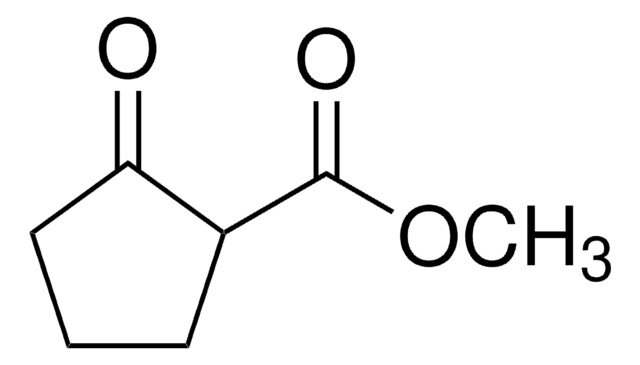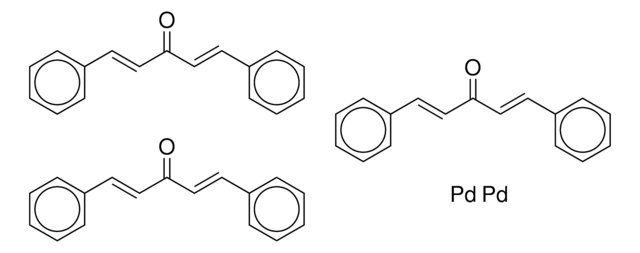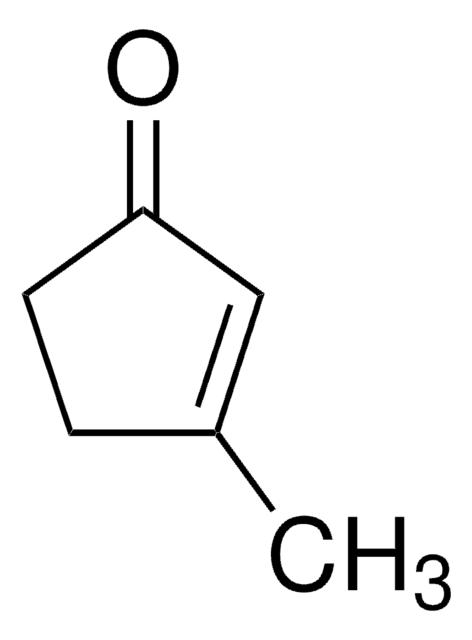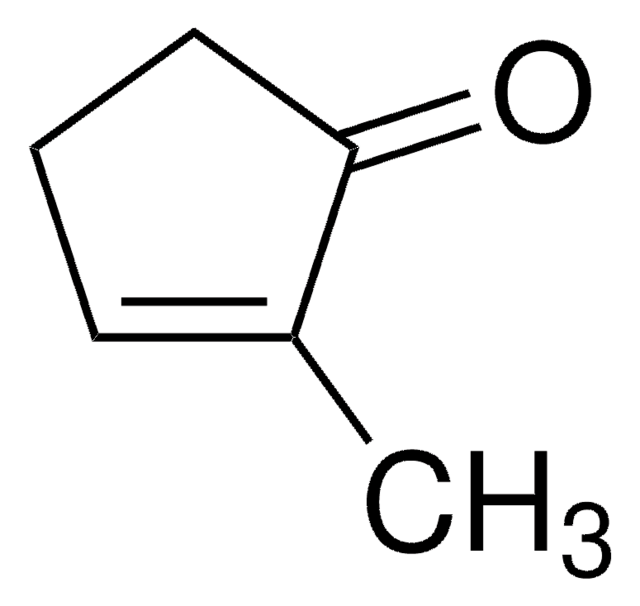302384
2,4,4,6-Tetrabromo-2,5-cyclohexadienone
90%
Synonym(s):
TBCO
Sign Into View Organizational & Contract Pricing
All Photos(2)
About This Item
Empirical Formula (Hill Notation):
C6H2Br4O
CAS Number:
Molecular Weight:
409.70
EC Number:
MDL number:
UNSPSC Code:
12352100
PubChem Substance ID:
NACRES:
NA.22
Recommended Products
Assay
90%
form
solid
functional group
bromo
storage temp.
2-8°C
SMILES string
BrC1=CC(Br)(Br)C=C(Br)C1=O
InChI
1S/C6H2Br4O/c7-3-1-6(9,10)2-4(8)5(3)11/h1-2H
InChI key
NJQJGRGGIUNVAB-UHFFFAOYSA-N
General description
2,4,4,6-Tetrabromo-2,5-cyclohexadienone forms solid charge-transfer molecular complexes with 4-(aminomethyl)piperidine and their spectroscopic characteristics were studied.
Application
2,4,4,6-Tetrabromo-2,5-cyclohexadienone was used as catalyst for efficient deoxygenation of sulfoxides to their corresponding sulfides with 1,3-dithiane. It was also used as reagent for conversion of alcohols to azides.
Signal Word
Warning
Hazard Statements
Precautionary Statements
Hazard Classifications
Eye Irrit. 2 - Skin Irrit. 2 - STOT SE 3
Target Organs
Respiratory system
Storage Class Code
11 - Combustible Solids
WGK
WGK 3
Flash Point(F)
Not applicable
Flash Point(C)
Not applicable
Personal Protective Equipment
dust mask type N95 (US), Eyeshields, Gloves
Choose from one of the most recent versions:
Already Own This Product?
Find documentation for the products that you have recently purchased in the Document Library.
Customers Also Viewed
Darren Van Essen et al.
Chemosphere, 266, 129195-129195 (2020-12-15)
Brominated flame retardants (BFRs) can enter aquatic environments where they can have adverse effects on organisms. The BFR, 1,2,5,6-Tetrabromocyclooctane (TBCO), has been introduced as a potential replacement for the major use BRF, Hexabromocyclododecane (HBCD). However, little is known about effects
Jakob Gustavsson et al.
Journal of chromatography. A, 1524, 74-86 (2017-10-17)
The influence of natural organic matter (NOM) on the solid-phase extraction (SPE) efficiency was investigated for legacy and emerging flame retardants (FRs; n=26) in surface water. Three different groups of FRs were analyzed: polybrominated diphenyl ethers (PBDEs), halogenated flame retardants
An efficient method for converting alcohols to azides with 2, 4, 4, 6-tetrabromo-2, 5-cyclohexadienone/PPh3 /Zn (N3)2? 2Py.
Saito A, et al.
Tetrahedron Letters, 38(22), 3955-3958 (1997)
Adel Mostafa et al.
Spectrochimica acta. Part A, Molecular and biomolecular spectroscopy, 118, 1012-1019 (2013-11-05)
The spectroscopic characteristics of the solid charge-transfer molecular complexes (CT) formed in the reaction of the electron donor 4-(aminomethyl) piperidine (4AMP) with the σ-acceptor iodine and the π-acceptors 2,3-dichloro-5,6-dicyano-1,4-benzoquinone (DDQ), 2,4,4,6-tetrabromo-2,5-cyclohexadienone (TBCHD) and 7,7,8,8-tetracyanoquinodimethane (TCNQ) have been studied in chloroform
Giulia Simonetti et al.
International journal of environmental research and public health, 17(11) (2020-05-31)
The occurrence of halogenated organic pollutants in indoor dust can be high due to the presence of textile, electronic devices, furniture, and building materials treated with these chemicals. In this explorative study, we focused on emerging organic pollutants, such as
Our team of scientists has experience in all areas of research including Life Science, Material Science, Chemical Synthesis, Chromatography, Analytical and many others.
Contact Technical Service





![1-Chloromethyl-4-fluoro-1,4-diazoniabicyclo[2.2.2]octane bis(tetrafluoroborate) >95% in F+ active](/deepweb/assets/sigmaaldrich/product/structures/206/487/53d52ee5-ef71-4e9a-9bc8-938b68b98d5d/640/53d52ee5-ef71-4e9a-9bc8-938b68b98d5d.png)




